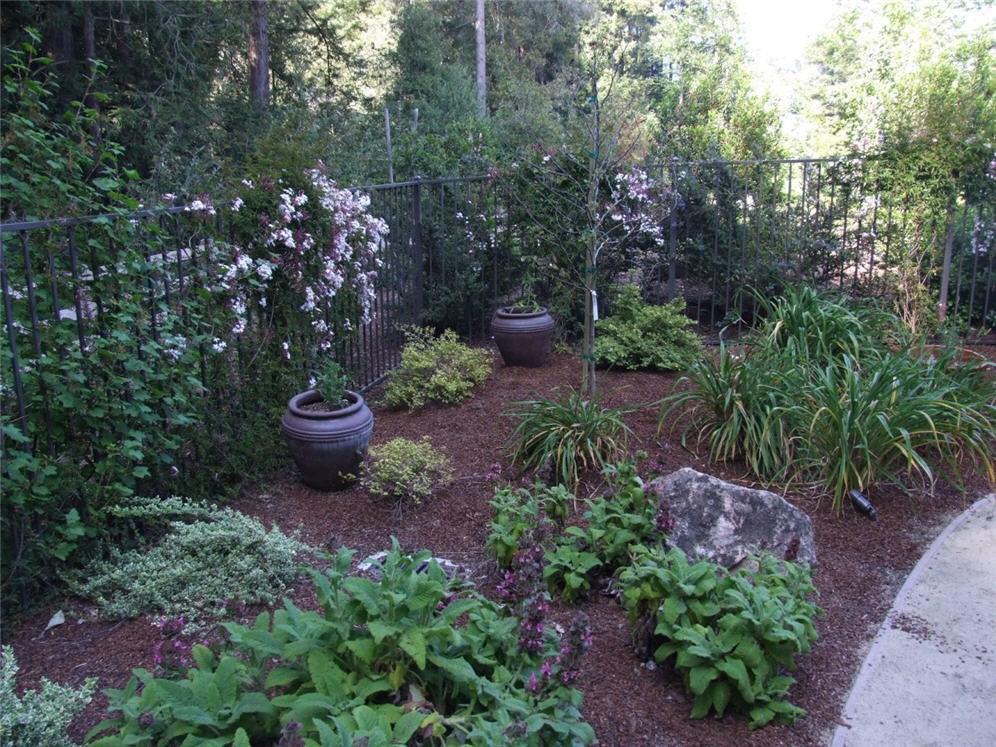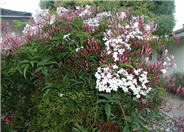
Common name:Pink Jasmine
Botanical name:Jasminum polyanthum
This fast-growing evergreen vine features clusters of fragrant white flowers almost all year in cool climates. It does best when grown in sun to part shade. -Monterey Bay Nursery
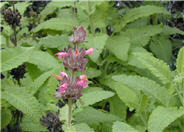
Common name:Hummingbird Sage, Pitcher Sage
Botanical name:Salvia spathacea
The extravagant leaves of this small clumping sage emit a perfectly sweet fragrance, which attracts hummingbirds. In the spring, the red/pink flowering spikes become a deep fuchsia. It is a great plant for dry shade.
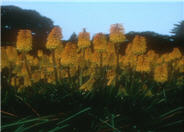
Common name:Torch Lily
Botanical name:Kniphofia hybrids
This perennial will grow to about 6' tall and has large green leaves and has red, orange, and yellow flowers that bloom in spring, summer, and fall.

Common name:Southern Pink Flowering Currant
Botanical name:Ribes sanguineum glutinosum
The pink flowering currant is an erect,spreading, deciduous shrub that grows 4-6 ft. tall. It has lobed toothed foliage, pink flowers, and black berries between January and March. The pink flowering currant needs shade inland, and is a native to California. It is drought tolerant and attracts hummingbirds.
-Cornflower Farms
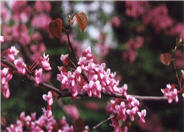
Common name:Eastern Redbud
Botanical name:Cercis canadensis
This small, deciduous tree with a rounded head is covered with small flowers of a rose pink color in the spring before the appearance of heart-shaped leaves. It can grow to 25' tall with an equal spread. It has a low branching habit with a rounded form. Yellow fall colors.

Common name:Coast Redwood
Botanical name:Sequoia sempervirens
This fast-growing, aromatic tree has soft, dark green foliage with long needles appearing in flat sprays and brown, barrel-shaped cones that appear after 1 year. Its soft, red-brown bark is fiberous and furrowed. Particularly after mechanical damage, this tree will stump sprout to form new, young trees around the stump. Avoid planting in areas of high foot traffic.
| Designer: | Shade Garden |
Photographer: GardenSoft |
Soils and Compost:
Practice grass-cycling by leaving short grass clippings on lawns after mowing, so that nutrients and organic matter are returned to the soil.
Water Saving Tip:
Water trees and shrubs by deep-soaking occasionally with low-volume irrigation equipment (drip, micro-sprays, or bubblers) to promote healthy, deep rooting.
Integrated Pest Management:
Remove irrigation water and fertilizer from areas where you don't want weeds to grow.
